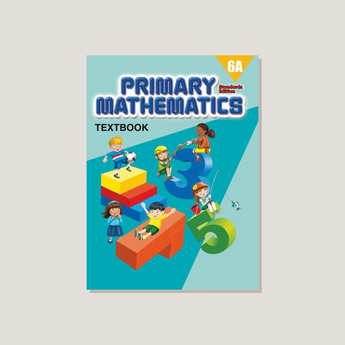Unveiling the very best Shortcuts for Resolving Mathematics Issues Rapidly
In the domain of maths, effectiveness is essential. Mastering faster ways can change the way people approach troubles. From leveraging the distributive property to utilizing quick reproduction techniques, these approaches improve both speed and precision. Additionally, identifying patterns streamlines complicated estimations. As one checks out these approaches, they may reveal unexpected understandings that can transform their mathematical experience. What are the most effective methods that can be easily incorporated into everyday practice?
Understanding Psychological Mathematics Techniques
Just how can one improve their estimation speed without counting on calculators? Understanding mental mathematics methods offers a sensible service. By using techniques such as damaging numbers right into smaller sized, manageable parts, people can streamline complex computations. For example, when adding two-digit numbers, rounding each number to the nearby 10 can make psychological addition much easier prior to adjusting back to the original values.
Another effective method is to exercise reproduction tables extensively, enabling fast recall of items (struggles in primary math). Additionally, acknowledging patterns in numbers can assist in much faster estimations, such as using the buildings of even and odd numbers. Regular method with problems and video games can better refine these skills, making mental mathematics much more user-friendly
Ultimately, cultivating confidence in one's arithmetic abilities enables quicker decision-making and boosts total mathematical effectiveness. By including these methods, any individual can considerably enhance their computation speed.
Utilizing the Distributive Home
The Distributive Home is a fundamental concept in mathematics that streamlines estimations by permitting reproduction across addition or reduction. It is crucial for pupils to comprehend its application through practical instances, which can improve their problem-solving abilities. In addition, acknowledging common blunders can better solidify their understanding and avoid errors in future estimations.
Recognizing the Distributive Home
Mastering the distributive building can considerably simplify mathematical estimations. This essential building states that when multiplying a solitary term by an amount or difference, one can disperse the multiplication throughout each term within the parentheses. For instance, in the expression a(b + c), one can revise it as abdominal muscle + a/c. This strategy not only simplifies computations but likewise enhances understanding of how numbers connect (struggles in primary math). The distributive home is especially useful in algebra, where it assists in simplifying expressions and addressing equations. Furthermore, it lays the foundation for much more intricate ideas, such as factoring and polynomial procedures. By understanding the distributive property, trainees can create a strong foundation for dealing with a wide variety of mathematical obstacles efficiently
Practical Examples Illustrated
Why is it crucial to use the distributive property in useful situations? The distributive property allows individuals to simplify complicated estimations, making problem-solving much more reliable. When determining the overall expense of several products, one can utilize the expression 5(2 + 3) to discover the overall price of 5 things valued at $2 and $3. By dispersing, the estimation comes to be 5 × 2 + 5 × 3, generating a quicker result of $25. An additional instance remains in algebra, where simplifying expressions like 3(x + 4) can be accomplished with distribution, leading to 3x + 12. Such applications show the efficiency of this home in different real-world situations, enhancing both rate and precision in mathematical analytical.
Typical Mistakes to Avoid
Although the distributive residential or commercial property is a powerful device in maths, common mistakes can bring about wrong results. One frequent mistake happens when students neglect to distribute the coefficient to each term within parentheses. In the expression 3(x + 4), stopping working to apply the building properly can lead to leaving out the multiplication, generating an inaccurate solution. Another error involves misapplying the property by including rather than multiplying, specifically when negative indicators are involved. Furthermore, pupils may disregard to streamline the result, which can unknown errors made throughout distribution. Acknowledging and avoiding these risks can enhance analytical performance and accuracy when making use of the distributive residential property in various mathematical contexts.
Quick Multiplication Shortcuts
In the domain of fast reproduction faster ways, strategies like multiplying by powers of 10 and the doubling and halving technique attract attention. These techniques can considerably streamline calculations, making them much more easily accessible. Recognizing these shortcuts can enhance effectiveness in mathematical analytical.
Increasing by Powers of 10
When increasing by powers of 10, the procedure comes to be remarkably straightforward, as the operation mainly includes moving the decimal point. Multiplying a number by 10 needs moving the decimal one place to the right, while multiplying by 100 necessitates a shift of two areas. This simplicity encompasses larger powers, where each additional zero indicates another decimal shift. Increasing 5.6 by 1,000 outcomes in 5,600. This technique considerably improves speed and accuracy, as people can promptly envision the outcome without complicated estimations. Such effectiveness is especially useful in mental math or when time is restricted, enabling fast analytical in various mathematical contexts. Mastering this strategy is crucial for anybody aiming to improve their math abilities.
Doubling and Cutting In Half Approach
The Doubling and Halving Approach supplies an efficient strategy for fast multiplication, particularly when dealing with also numbers. This strategy involves changing a multiplication trouble right into a simpler kind by either increasing one of the numbers and cutting in half the other. To determine 16 × 25, one can cut in half 16 to get 8 and dual 25 to get 50, resulting in 8 × 50, which amounts to 400 (struggles in primary math). This technique streamlines computations, making them more convenient. It is especially valuable in mental mathematics, allowing people to overcome problems quickly and accurately. By leveraging this strategy, professionals and pupils can enhance their mathematical agility, thus boosting total efficiency in mathematical jobs

Reliable Division Techniques
Department often poses challenges for lots of students, utilizing effective techniques can significantly simplify the procedure. One reliable technique is making use of compatible numbers, which entails rounding the divisor and reward to less complicated worths that are close to the initial numbers. This technique makes mental computations much more manageable. Another strategy is the estimate strategy, where students can discover a rough response prior to performing the exact department, supplying a helpful benchmark for precision.
Moreover, the long department method remains a staple for separating larger numbers. By breaking the procedure right into smaller, a lot more digestible actions, learners can keep clearness. The duplicated subtraction approach can likewise be useful, specifically for those who deal with even more abstract concepts. By methodically subtracting the get redirected here divisor from the reward, people can imagine the procedure. In general, these approaches can improve department skills, causing quicker and much more precise analytical abilities.
Quick Enhancement and Subtraction Techniques
Exactly how can learners boost their speed and accuracy on top of that and subtraction? One reliable technique is to use psychological math approaches, such as breaking numbers into smaller sized, more workable components. When adding 47 and 36, one can initially include 40 and 30 to obtain 70, then include the staying 7 and 6 to get here at 83. This approach streamlines calculations and decreases errors.
An additional strategy involves utilizing the number line for visual students, aiding them to see the partnerships in between numbers and improve their comprehension. Furthermore, experimenting devices like flashcards can strengthen fast recall of standard amounts and distinctions.
Furthermore, learners can gain from familiarizing themselves with benchmark numbers, such as rounding to the nearest ten, which permits quicker evaluations. By incorporating these methods company website into their practice, learners can greatly improve their rate and precision in standard math procedures.
Leveraging Evaluation for Quick Calculations
Evaluation acts as a powerful device for boosting estimation rate, matching mental math techniques efficiently. By rounding numbers to their nearest entire worths, people can simplify complex calculations, making it less complicated to get here at an approximate outcome swiftly. When encountered with an issue like 198 + 267, rounding to 200 + 270 returns a quick estimate of 470, allowing the solver to evaluate the accuracy of the final solution.
Moreover, estimation is especially useful in scenarios entailing multiplication and division. By rounding elements to simpler numbers, one can swiftly evaluate approximate items or quotients. This strategy not only conserves time however additionally assists in recognizing prospective mistakes in computations.
Identifying Patterns and Formulas
Patterns and solutions are necessary tools in maths that make it possible for individuals to address issues extra efficiently. Identifying these patterns allows learners to recognize partnerships in between numbers and concepts, which can streamline complex calculations. For circumstances, identifying the quadratic formula (ax ^ 2 + bx + c = 0) helps with fast remedies to various equations.
Additionally, patterns in series, such as arithmetic or geometric progressions, assistance people forecast future terms without extensive computations. Solutions, on the various other hand, offer as faster ways, permitting faster problem-solving by encapsulating complicated connections right into workable expressions.
Regularly Asked Questions
How Can I Improve My Focus While Resolving Math Issues Swiftly?
To enhance focus while fixing mathematics issues swiftly, one can get rid of diversions, established certain goals, method mindfulness methods, take regular breaks, and maintain a consistent study regimen to boost focus and psychological clearness.
What Applications or devices Assist with Quick Mathematics Problem-Solving?
Different resource tools and applications, such as Photomath, Microsoft Mathematics Solver, and Desmos, improve quick math problem-solving. These sources supply detailed services, graphing abilities, and instant feedback, making them beneficial for pupils and experts alike.
Exist Particular Math Shortcuts for Standard Tests?
Yes, particular mathematics faster ways for standardized examinations consist of techniques like estimate, recognizing number properties, making use of the process of removal, and grasping usual formulas. These strategies boost speed and precision, enhancing total test performance.

Just how Do I Practice Math Shortcuts Properly?
To practice mathematics faster ways efficiently, individuals must regularly address varied problems, utilize on the internet sources, and participate in timed drills. Consistency and representation on mistakes boost understanding, ultimately leading to enhanced rate and accuracy in estimations.
Can Shortcuts Be Applied to Complicated Mathematics Issues?
Shortcuts can without a doubt be applied to complicated mathematics troubles, although their effectiveness varies. Mastery of fundamental principles and strategic thinking allows people to streamline procedures, making it less complicated to tackle elaborate computations effectively.
By using approaches such as damaging numbers right into smaller sized, manageable parts, individuals can simplify complex calculations. Additionally, recognizing patterns in numbers can help with quicker computations, such as utilizing the residential properties of also and weird numbers. Estimate offers as a powerful tool for improving calculation speed, complementing psychological mathematics approaches properly. By rounding numbers to their local entire worths, individuals can simplify complex estimations, making it less complicated to get here at an approximate result rapidly. Recognizing these patterns allows students to determine connections between numbers and concepts, which can streamline complicated calculations.